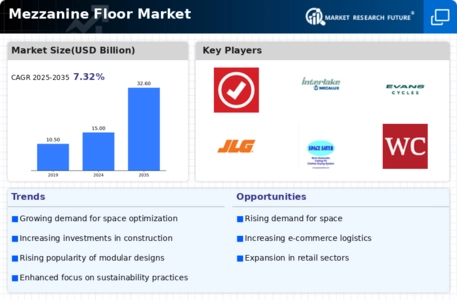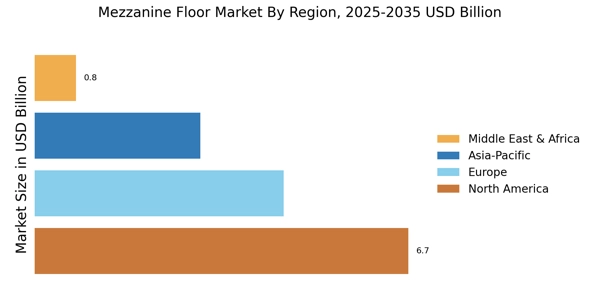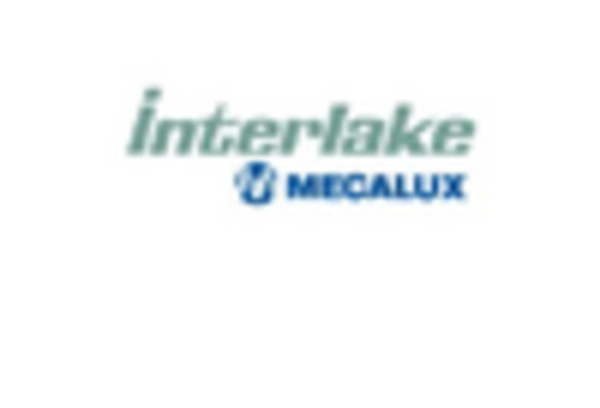Rising Construction Activities
The Mezzanine Floor Market is poised for growth due to the rising construction activities across various sectors, including commercial, industrial, and residential. As urbanization accelerates, the demand for innovative building solutions that maximize space utilization is becoming more pronounced. Mezzanine floors offer a versatile option for creating additional usable space within existing structures, which is particularly appealing in densely populated areas. Recent statistics indicate that construction spending has increased by approximately 8% in the last year, reflecting a strong market environment for mezzanine installations. This trend suggests that as new projects emerge, the Mezzanine Floor Market will likely benefit from increased adoption of these space-saving solutions.
Focus on Cost-Effective Solutions
The Mezzanine Floor Market is benefiting from a growing focus on cost-effective solutions among businesses. As companies strive to reduce operational costs while maximizing space, mezzanine floors present an attractive option. They allow for the expansion of usable space without the significant financial burden associated with new construction. Recent market analyses suggest that businesses can achieve a return on investment within a few years of installing a mezzanine floor, making it a financially viable choice. This emphasis on cost efficiency is likely to drive further interest in the Mezzanine Floor Market, as organizations look for ways to enhance their operational capabilities without incurring excessive expenses.
Increased Demand for Warehouse Space
The Mezzanine Floor Market is experiencing a notable surge in demand for warehouse space, driven by the expansion of e-commerce and retail sectors. As businesses seek to optimize their storage capabilities, mezzanine floors provide an effective solution for maximizing vertical space without the need for extensive renovations. According to recent data, the warehousing sector has seen a growth rate of approximately 10% annually, indicating a robust market for mezzanine solutions. This trend is likely to continue as companies prioritize efficient inventory management and streamlined operations. The ability to create additional storage areas through mezzanine installations is becoming increasingly attractive, suggesting that the Mezzanine Floor Market will play a crucial role in meeting the evolving needs of modern logistics and supply chain management.
Technological Advancements in Design
Technological advancements in design and engineering are significantly influencing the Mezzanine Floor Market. Innovations such as 3D modeling and advanced materials are enabling more efficient and cost-effective mezzanine solutions. These technologies allow for customized designs that cater to specific client needs, enhancing the appeal of mezzanine installations. Furthermore, the integration of smart technologies into mezzanine designs is becoming more prevalent, offering features such as automated storage systems and energy-efficient lighting. As businesses increasingly seek to incorporate modern technologies into their operations, the Mezzanine Floor Market is likely to see a rise in demand for technologically advanced solutions that improve functionality and sustainability.
Sustainability and Eco-Friendly Practices
The Mezzanine Floor Market is increasingly aligned with sustainability and eco-friendly practices. As environmental concerns gain prominence, businesses are seeking solutions that minimize their carbon footprint. Mezzanine floors contribute to sustainability by optimizing space and reducing the need for new construction, which can be resource-intensive. Additionally, many manufacturers are adopting eco-friendly materials and practices in the production of mezzanine systems. This shift towards sustainable solutions is reflected in market trends, with a growing number of companies prioritizing green building certifications. As sustainability becomes a key consideration in business operations, the Mezzanine Floor Market is likely to experience heightened demand for environmentally responsible solutions.


















Leave a Comment